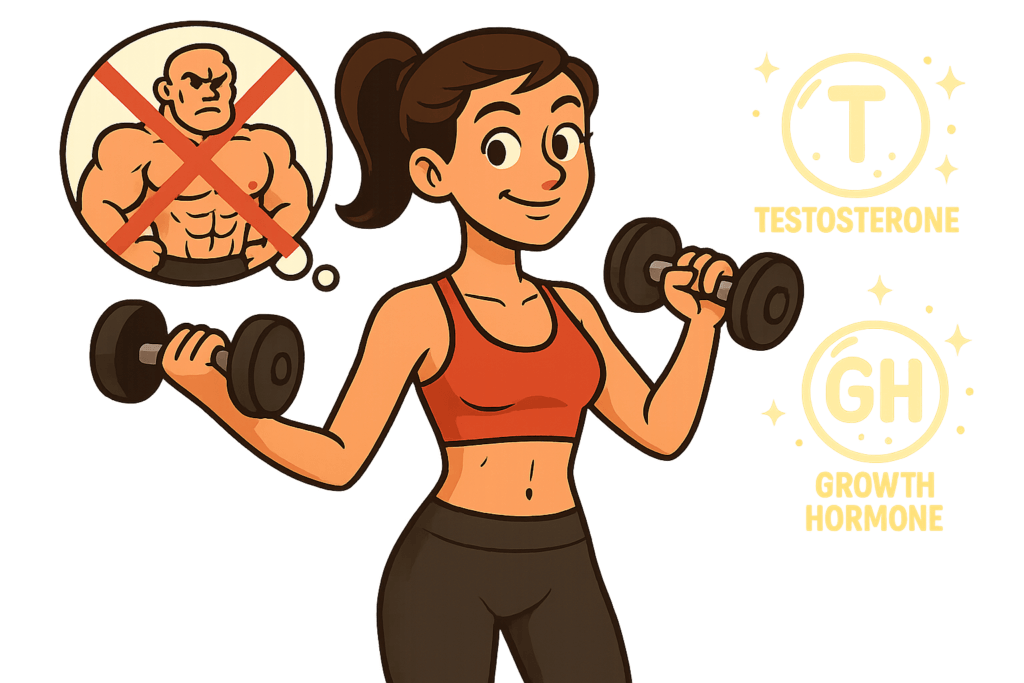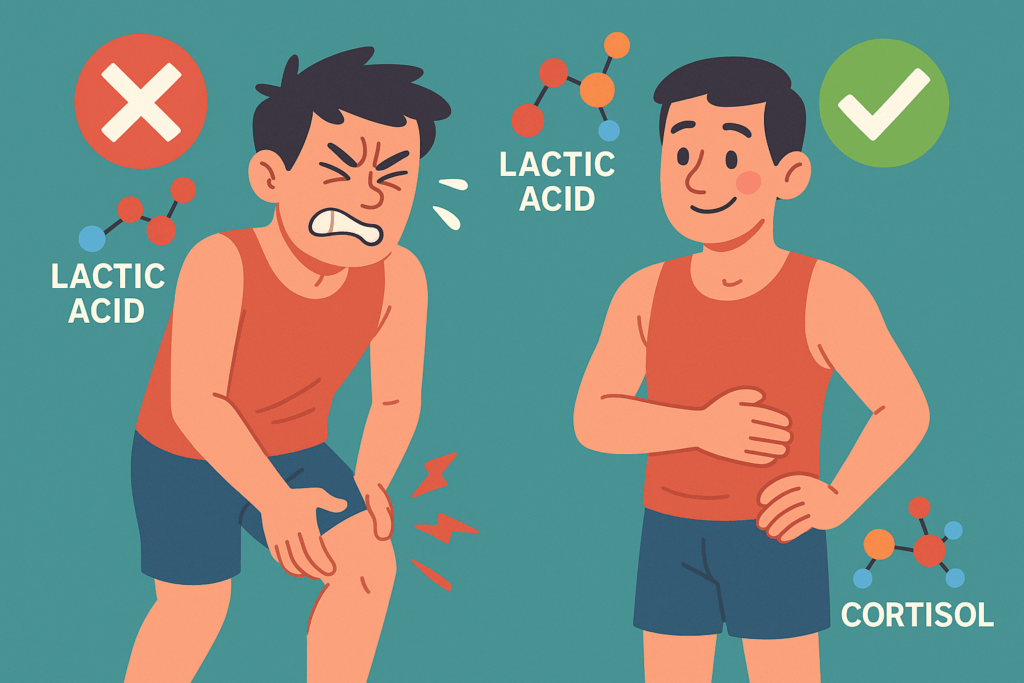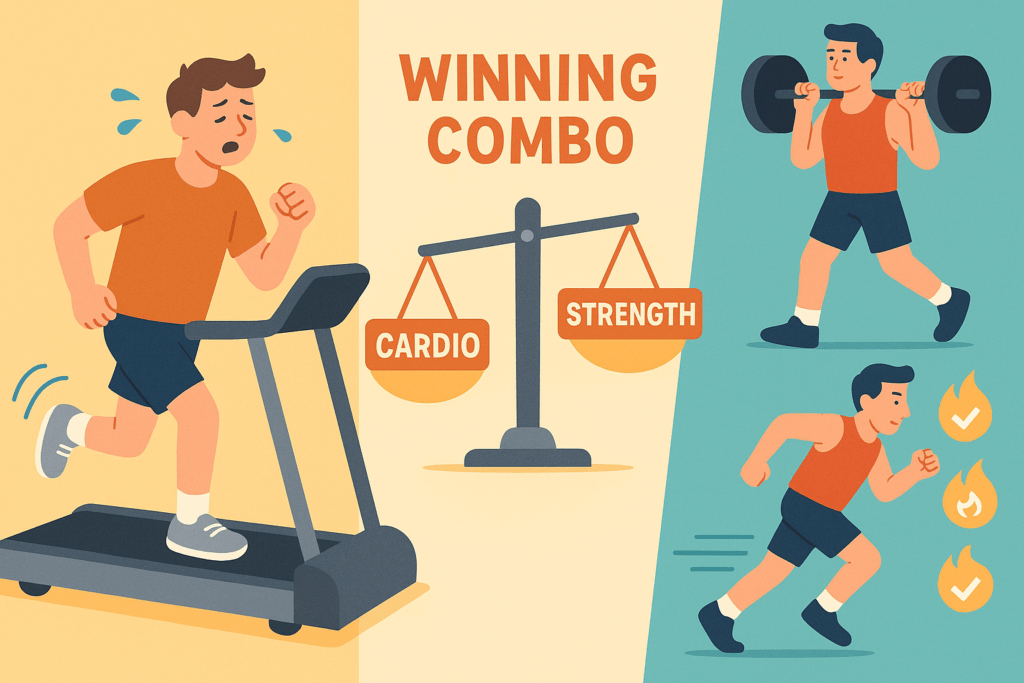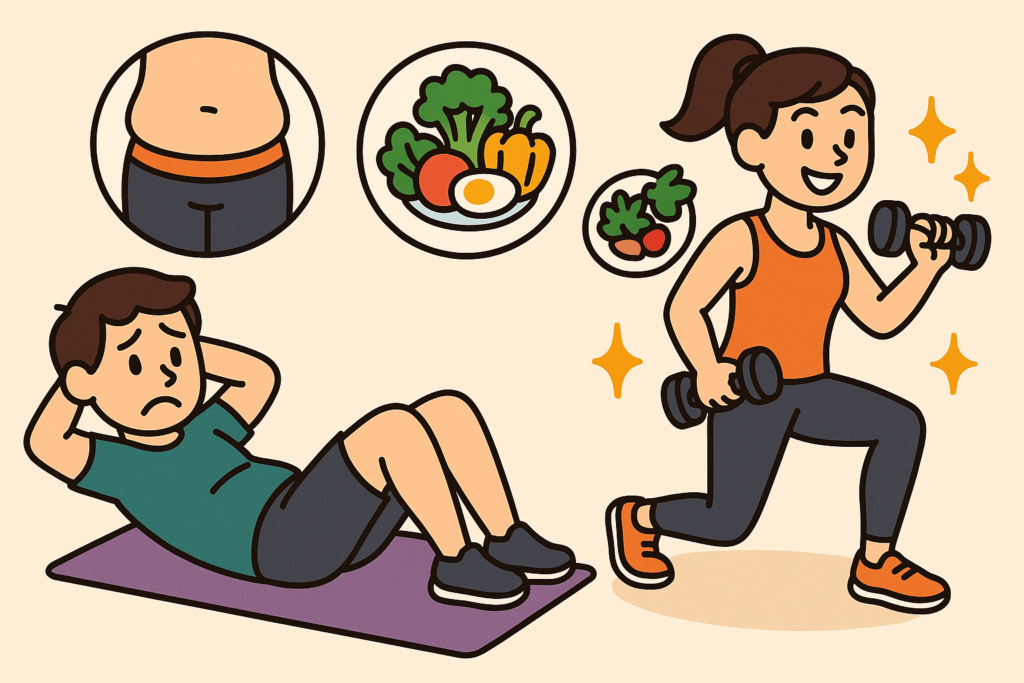The world of fitness is full of advice—but not all of it is true. In fact, some of the most popular tips people follow at the gym or at home are actually fitness myths that can sabotage progress, mess with your hormones, or even lead to injury.
The problem with myths is that they sound convincing. Someone sees short-term results, shares them online, and suddenly a bad idea spreads like wildfire. But when we look at the science—how your body actually works at the chemical and hormonal level—we see a different story.
In this post, we’ll bust some of the most common fitness myths and explain what really happens inside your body, so you can train smarter, stay healthier, and reach your goals faster.
Myth 1: Lifting Weights Makes You Bulky
The Truth: Building large, bulky muscles requires years of training, high-calorie intake, and specific genetic factors. For most people, strength training increases lean muscle mass and improves metabolism without making them look oversized.
Science: Strength training triggers the mTOR pathway, stimulating muscle protein synthesis. At the same time, hormones like testosterone and growth hormone rise, building lean tissue. But unless calorie intake is high, muscle growth remains toned—not bulky.

Takeaway: Lifting weights makes you leaner and fitter, not bulky.
Myth 2: No Pain, No Gain
The Truth: Pain is not proof of progress. Soreness (caused by lactic acid buildup and microtears in muscle fibers) is normal, but sharp or lingering pain signals injury.
Science: Exercise-induced muscle damage stimulates satellite cells to repair fibers, releasing myokines that support growth. But excessive damage raises cortisol, which breaks down tissue instead of building it.
Takeaway: Challenge your body, but never ignore pain—it could derail your fitness journey.

Myth 3: Cardio is the Best Way to Lose Weight
The Truth: Cardio burns calories, but strength training + cardio is far more effective for fat loss. Strength training builds muscle, which raises your resting metabolic rate.
Science: Cardio raises epinephrine and burns glucose and fat during the activity. Strength training boosts growth hormone and IGF-1, which keep burning fat long after the workout ends.
Takeaway: Combine both for maximum fat loss, don’t rely on cardio alone.
Myth 4: You Can Spot Reduce Fat
The Truth: Crunches won’t melt belly fat, and squats won’t burn thigh fat. Fat loss happens systemically, not locally.
Science: Hormones like catecholamines mobilize fat from all over the body. Where fat leaves first depends on genetics and receptor density (beta-adrenergic vs alpha-adrenergic receptors).

Takeaway: Full-body workouts + nutrition = fat loss everywhere. Spot targeting is a myth.
HIIT vs Traditional Cardio: Which Burns Fat Faster?
Myth 5: Sweating More Means Burning More Calories
The Truth: Sweat is your body’s cooling mechanism, not a calorie-burning measure.
Science: Sweat glands respond to heat and adrenaline, releasing fluid to regulate temperature. While adrenaline is linked with fat mobilization, sweat volume doesn’t correlate with fat burned.
Takeaway: Don’t measure progress by sweat, measure it by strength, endurance, and consistency.
Myth 6: Women Should Avoid Heavy Weights
The Truth: Women lack the testosterone levels required to build “male-like” muscle bulk. Strength training in women enhances lean muscle, burns fat, and strengthens bones.
Science: Women produce testosterone at ~10% of male levels. They rely more on growth hormone and IGF-1 for muscle development, which results in toned physiques rather than bulky builds.
Takeaway: Heavy weights make women strong, lean, and healthy—not bulky.
Myth 7: More Workouts = Better Results
The Truth: Progress comes from recovery as much as training. Overtraining raises cortisol, lowers testosterone, and impairs muscle repair.
Science: Muscles grow during rest when satellite cells repair fibers, supported by anabolic hormones. Without recovery, cortisol dominates, breaking down tissue.

Takeaway: Balance intensity with rest for sustainable gains.
Myth 8: Protein Shakes Are Mandatory After Every Workout
The Truth: Protein is important, but shakes are just one option. Whole foods like chicken, eggs, beans, or lentils provide the same amino acids.
Science: What matters is reaching your daily protein target (1.6–2.2 g/kg of bodyweight). Post-workout, amino acids stimulate muscle protein synthesis via the mTOR pathway.
Takeaway: Shakes are convenient, not mandatory.
Myth 9: Stretching Prevents All Injuries
The Truth: Stretching improves flexibility but doesn’t guarantee injury prevention. Strength, balance, and proper movement mechanics matter more.
Science: Stretching increases nitric oxide release, improving blood flow, but injuries often occur due to poor form or muscle imbalances—not just tightness.
Takeaway: Stretch, but also train for strength and stability.
Myth 10: Crunches Give You a Six-Pack
The Truth: Visible abs are more about diet and fat percentage than ab exercises.
Science: To reveal abdominal muscles, body fat needs to drop below ~15% in men and ~20% in women. Hormones like insulin and cortisol play a huge role in fat storage around the belly.
Takeaway: Abs are built in the kitchen, not just in the gym.
FAQs
1. Is sweating a sign of fat burning?
No, sweating is about temperature regulation, not calorie burn.
2. Do women get bulky from lifting weights?
No. Low testosterone prevents bulky muscle; instead, women develop lean muscle tone.
3. Is cardio enough for weight loss?
Not alone. Strength training boosts metabolism for long-term fat loss.
4. Can stretching stop all injuries?
No. It helps flexibility, but strength and balance are equally important.
5. Do protein shakes build muscle faster than food?
No. They’re just a convenient protein source. Whole foods work the same way.
Disclaimer
This article is for informational purposes only and is not a substitute for professional medical advice, diagnosis, or treatment. We are not doctors. Always consult your physician or a qualified healthcare provider with any questions you may have regarding a medical condition. Do not rely on online content alone to make decisions about your health.
